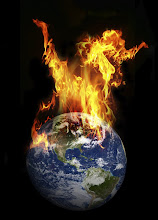Human effects on carbon cycle somewhat increased movement of carbon from biomass to atmosphere: agriculture: forests & grasslands converted to cropland, and wood is used for building and fire. Human effects were seen as small before the 1850s. Before the 1850s solar energy supplied humans with heat, precipitation, wind, food. Supply was virtually inexhaustible. Because of the Industrial Revolution, after the 1850s fossil fuels became an increasingly important part of energy base. While fossil fuels equal stored solar energy and fossil fuels sequester carbon, cement production releases carbon into the atmosphere. After 1950s there was a rise in standard of living in the West. There was also a huge increase in human population, and rapid modernization of economies (and thus use of fossil fuels). There was also an unprecedented increase in rate that carbon enters atmosphere as carbon dioxide most likely lead to pronounced, relatively rapid global warming.
According to the class power point of carbon cycles, there are at least three points that observed increase in atmospheric CO2 concentration is due to emissions related to human activity. -The rise in atmospheric CO2 concentration closely follows the increase in emissions related to fossil fuel burning. -The inter-hemispheric gradient in atmospheric CO2 concentration is growing in parallel with CO2 emissions. That is, there is more land mass in the Northern hemisphere, and therefore more human activity, and thus, higher emissions, which is reflected in the CO2 growth in the Northern hemisphere (compared to the SH). -Fossil fuels and biospheric carbon are low in Carbon 13 (an isotope). The ratio of carbon 13 to carbon 12 in the atmosphere has been decreasing.
Sunday, November 22, 2009
Subscribe to:
Post Comments (Atom)

No comments:
Post a Comment